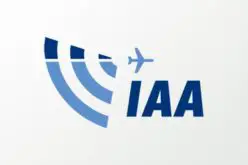Bhutan, a landlocked country nestled in the Eastern Himalayas, faces significant environmental challenges due to climate change. With its fragile ecosystem, including 2,700 glaciers, the nation is increasingly vulnerable to natural disasters such as floods and landslides. In response, Bhutan has partnered with the United Nations Satellite Centre (UNOSAT) to strengthen its geospatial skills for resilience through advanced geospatial technologies.
Through the project Strengthening Capacities in the Use of Geospatial Information for Improved Resilience in Asia, Pacific, and Africa, supported by the Norwegian Agency for Development Cooperation (NORAD), Bhutan has focused on building local expertise in Geographic Information Technologies (GIT). This initiative enhances Bhutan’s ability to manage land resources, improve disaster risk assessments, and boost geospatial skills for resilience to handle climate challenges.
UNOSAT’s efforts included six national technical training programs covering cloud GIS, UAV data collection, advanced remote sensing, and web application development. Bhutanese government institutions, such as the National Land Commission Secretariat (NLCS) and Bhutan Power Corporation, benefited from these tailored programs, helping strengthen geospatial skills for resilience and enabling them to apply geospatial data in their daily operations.
Also Read – Bhutan’s Third Remote Sensing Satellite to Boost Earth Observation
In addition to training, UNOSAT provided ongoing technical support, known as technical backstopping, which allowed Bhutanese institutions to integrate GIS data into their workflows and improve disaster risk assessments. This support has empowered local agencies to further enhance geospatial skills for resilience and leverage advanced geospatial tools effectively.
One of the key achievements of this project was the development of three web-based applications. These tools helped Bhutanese authorities process UAV imagery for environmental monitoring and apply geospatial data for disaster response. One notable tool, the Multi-Criteria Decision Analysis (MCDA) platform, has already seen significant use, with over 121 government officials utilizing it to support decision-making processes.
Bhutan’s progress in geospatial technologies, supported by UNOSAT, reflects its commitment to enhancing disaster resilience and environmental management. With stronger technical capacities and cutting-edge tools, Bhutan is now better equipped to address the risks posed by climate change and to ensure sustainable development for future generations.
Source: MirageNews











